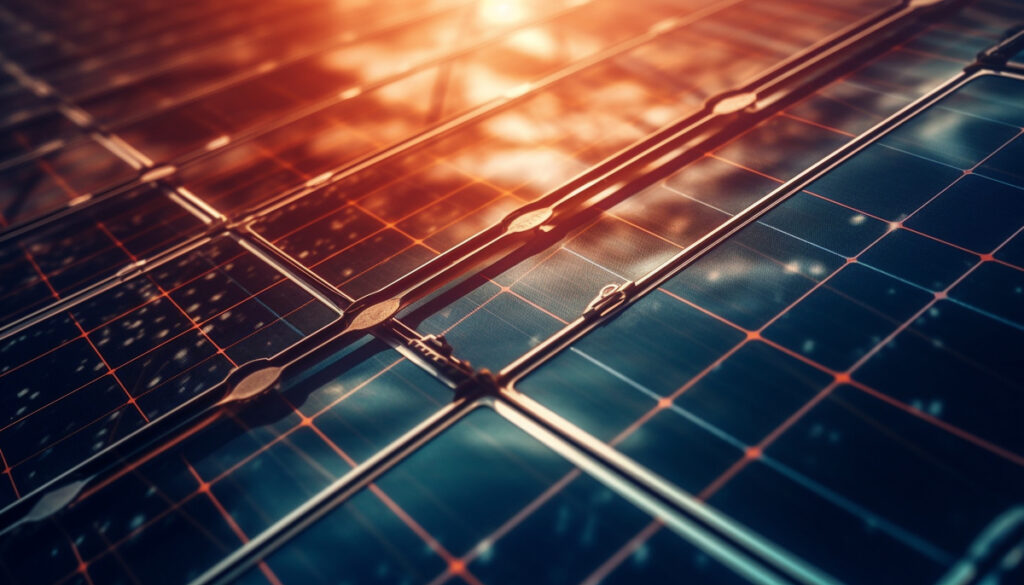Exclusive Neuroject Article: Solar power, often referred to as “green energy,” has gained significant popularity in recent decades with solar panel in building. Its adoption has witnessed a notable upswing, with more households, offices, and industrial facilities embracing this eco-friendly energy source.
The prominence of “photovoltaic energy” has risen sharply in recent years. A remarkable 93% of the global population resides in countries where the daily solar photovoltaic potential averages between 3.0 and 5.0 kWh/kWp. In the UK, solar power contributed to 35% of the country’s total renewable energy generation in 2022, marking a substantial increase from previous years.
There has been a growing emphasis on the associated technology as attention shifts away from conventional energy sources like coal and oil. Since 2012, the solar energy sector has experienced a doubling of investments, which is truly encouraging especially solar panel in building sector.
Solar panel in building exhibit efficiency in various aspects of energy preservation. By employing the latest solar energy technologies, buildings can achieve energy savings of around 30-40%. Moreover, it is possible to become a net-zero energy building owner by generating more energy than is consumed. Undoubtedly, solar-powered buildings, when combined with advanced technology, are highly effective in minimizing energy consumption.
Table of Contents
How Solar Energy Functions
Solar panels, also referred to as solar modules, consist of layers of silicon cells enclosed in a metal frame with a glass casing. These silicon cells possess conductive properties that enable them to absorb and convert sunlight into usable electrical power. When sunlight interacts with the silicon cells, it sets the electrons in motion, initiating the flow of direct current (DC) electricity. This phenomenon is known as the photovoltaic effect and forms the fundamental operating principle of solar panel in building.
The process of photovoltaic electricity generation can be summarized as follows:
- Photovoltaic solar cells absorb solar radiation.
- When sunlight interacts with the silicon cells, electrons begin to move, creating a flow of DC electric current.
- Wiring then directs this DC electricity to a solar inverter, which converts it into alternating current (AC) power.
Three Categories of Solar Energy Technologies: Presently, solar energy is harnessed through three primary technologies:
- Photovoltaic (PV) – directly converts light into electricity.
- Concentrating solar power (CSP) – utilizes solar heat (thermal energy) to drive electric turbines on a utility-scale.
- Solar heating and cooling (SHC) systems – store thermal energy for supplying hot water and air heating and/or conditioning.
Six Reasons for Adopting Solar Energy Technologies in Buildings: Solar energy finds application in various devices, from calculators to agricultural and space technologies. However, in recent years, it has been increasingly integrated into buildings for several compelling reasons:
- Rising energy consumption.
- Environmental awareness.
- Addressing global climate change.
- Corporate social responsibility (CSR) benefits for corporate buildings.
- Attraction to cleaner, renewable energy.
- Enhanced property value and social appeal.
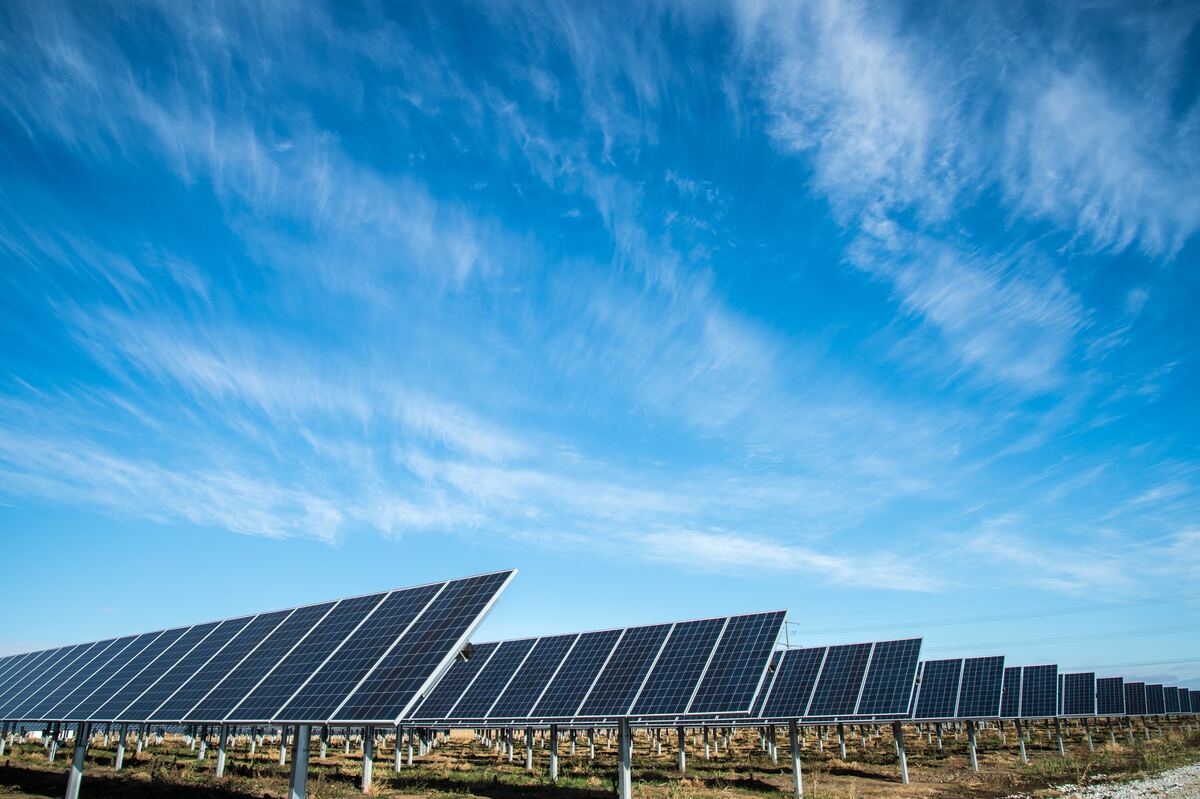
How Solar Energy is Stored
Solar energy can be stored using various methods, with the most common being solar panel in building-coupled pumped hydropower storage systems in the grid. Solar power plants are often coupled with storage technologies such as thermal storage (utilizing fluids in concentrating solar power or CSP plants) and electromechanical storage (batteries in photovoltaic or PV plants). Other storage options, like flywheels and compressed air storage, offer different characteristics, such as rapid discharge rates, making them attractive to grid operators. Here’s a brief overview of each:
- Battery Storage: Solar energy can be stored in electrochemical batteries. When solar energy is supplied to the battery, chemical reactions within the battery components retain the energy, which can be released during discharging to provide current for consumption. While lithium-ion batteries are commonly used for solar energy storage, newer battery technologies are emerging, offering more cost-effective and scalable solutions.
- Thermal Storage: This approach employs various mediums, like molten salt or water, to capture and store heat from sunlight. The heated mediums are then stored in insulated tanks until needed, typically to generate power by boiling water.
- Mechanical Storage: Mechanical storage systems convert surplus electric power into mechanical power, which is later converted back into electricity for consumption.
There are three primary types of mechanical energy storage systems:
- Flywheel: Surplus electricity is used to spin a flywheel, which generates electricity during peak demand periods.
- Pumped-Storage Hydropower: Surplus energy from solar panel in building is used to pump water into a reservoir and then release it downstream through turbine generators to generate electricity.
- Compressed Air: This system stores compressed air in large vessels or natural formations and releases it to generate electricity during periods of high power demand.
The Optimal Approach to Solar Energy Storage
Selecting the most suitable solar panel in building-coupled energy storage method depends on available resources and specific requirements. Here are some options for residential and commercial applications:
- Commercial Solar Energy Storage: Businesses and larger enterprises often have larger budgets than households, making thermal and mechanical storage viable options. Despite higher costs, these storage solutions help utilities manage peak energy demand effectively. Ensuring large, accessible panels facilitates easy inspection and maintenance of the storage system.
- Grid Energy Storage Coupled with Next-Generation Batteries: This approach holds promise for future commercial solar energy storage.
- Compressed Air: As a cost-effective choice for mechanical storage, compressed air is well-suited for large-scale energy storage applications.
- Pumped Hydro: While capable of producing substantial potential energy, this method involves significant initial investment costs and regulatory complexities.
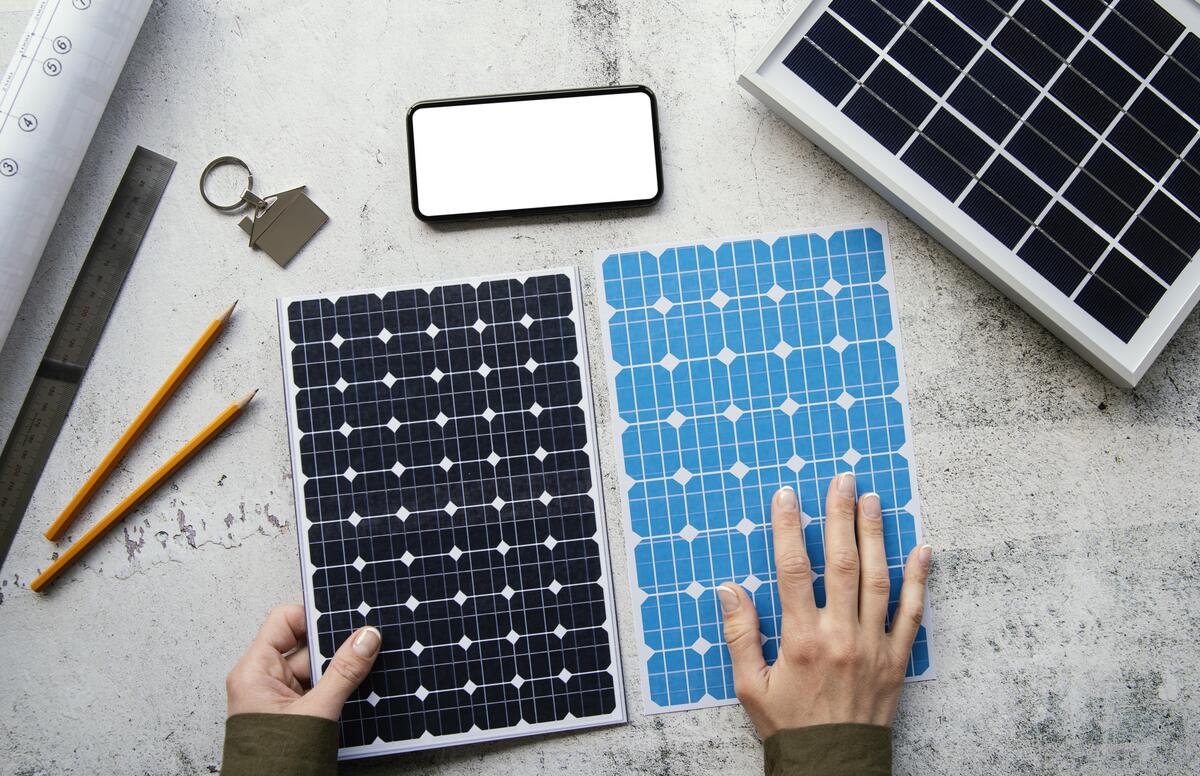
Understanding Solar Energy
Solar energy, derived from the sun’s abundant light and heat, plays a crucial role in the transition to clean and sustainable energy sources. Solar energy harnesses the power of sunlight through two primary methods: generating electricity and producing heat. The utilization of solar panel in building is at the heart of these processes, which has led to their widespread adoption in various applications, from residential rooftops to expansive solar farms.
One of the key advantages of solar energy is its status as a clean and renewable energy source. As long as the sun continues to shine, energy can be generated without releasing harmful greenhouse gas emissions, contributing significantly to mitigating climate change. Furthermore, the environmental impact of solar panel in building is minimal, given their long lifespan, often exceeding 25 years, and the increasing use of recycled materials in their production.
Three Ways Solar-Powered Buildings Enhance Efficiency
There are 3 ways that solar-powered buildings enhance efficiency:
- Solar-powered buildings improve the efficiency of heating and cooling systems by up to 30% with proper HVAC system installation. Solar energy-efficient buildings can reduce the operating costs of solar water heaters by up to 90%.
- The use of Low-Emissivity (Low-e) Window Glazing can reduce the need for space cooling by approximately 40%.
- Employing energy-efficient lighting and appliances can reduce energy consumption in a solar building by 20-30%.
The history of solar energy dates back to ancient times when civilizations used sunlight to ignite fires and illuminate torches. However, the modern era of solar energy began in 1839 when French physicist Edmond Becquerel discovered the photovoltaic effect. This effect, which involves the release of electrons when a semiconductor surface is exposed to sunlight, laid the foundation for photovoltaic (PV) technology.
In 1954, Bell Labs developed the first silicon PV cell capable of converting solar energy into electricity for practical use. Today, solar energy powers not only homes but also satellites and spacecraft in Earth’s orbit, demonstrating its versatility and reliability.
Solar panel in building typically consist of semiconductor materials, such as silicon, enclosed in metal panel frames with glass casings. When sunlight’s photons interact with these materials, they release electrons, generating an electric charge. This photovoltaic charge produces direct current (DC) electricity, which is then converted into alternating current (AC) by an inverter for use in homes and businesses.
Solar PV panels, which generate electricity, differ from solar thermal panels, which produce heat directly by using sunlight to heat water or fluids. Solar thermal panels are commonly used for hot water systems and heating. Solar farms, also known as solar parks or fields, are large-scale installations of interconnected solar panel in building spread over vast areas. These farms are designed for large-scale electricity generation, feeding the electrical grid and providing power to communities.
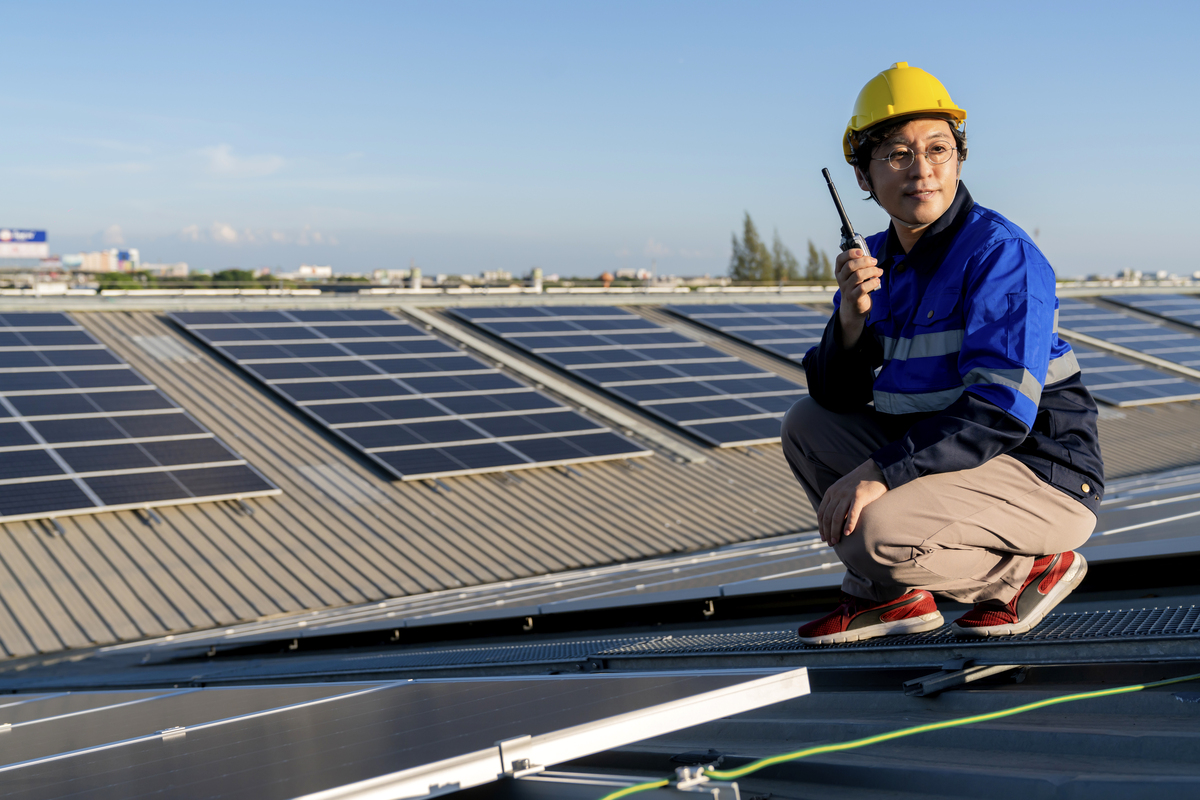
Advantages of Solar Panel in Building
The storage of excess solar energy plays a crucial role in maximizing the efficiency of a solar panel in building. It not only enhances grid energy utilization but also leads to cost savings while reducing fossil fuel emissions and minimizing the carbon footprint. Below are several advantages and benefits associated with the storage of solar energy.
1. Balancing Electricity Loads: Without storage, solar electricity generated must be immediately consumed. Energy storage allows surplus power to be stored and reserved for peak usage or for powering devices when sunlight is unavailable. During daylight hours, it recharges using solar power when generation is high and consumption is low, making stored energy readily available for use at any time.
2. Bridging Shortfalls: Short-term energy storage ensures a consistent energy supply, bridging gaps in power generation during brief disruptions such as routine maintenance.
3. Energy Resilience: The energy grid is susceptible to outages and disturbances, often due to severe weather conditions. Solar energy storage serves as a backup power source during unpredictable power interruptions, ensuring critical facilities continue to operate and essential services like communication remain accessible.
While each battery must meet specific safety and reliability standards for use in a particular region or state, it can be challenging to determine which technical specifications and characteristics are most important when comparing various storage systems. Here are some guidelines to consider when evaluating different battery specifications.
4. Financial Advantages: While the primary motive behind the installation of solar energy storage is backup power, it can also yield financial benefits in certain situations. There are two ways in which energy storage can be financially advantageous: during periods of high demand charges and under time-of-use rate structures. During these instances, you can draw power from your battery instead of relying on the grid, particularly when facing elevated demand rates. Furthermore, energy storage can enhance the financial returns from solar power systems, particularly when one-to-one net metering is not available, by allowing greater utilization of generated solar energy.
5. Grid Benefits: Solar energy storage offers more than just additional renewable energy capacity to the grid; it contributes to several critical services necessary for maintaining the stability of our electrical power system, although not encompassing all of them.
For instance, in the United States, the electrical power grid operates at a frequency of 60 hertz. Even a slight deviation of a few tenths of a 0.5-hertz point can trigger undesirable cascading blackouts. Various energy resources play a role in offering support and frequency regulation. Energy storage systems represent another technology that contributes to frequency support, reducing the reliance on fossil fuel-based energy sources within the grid.
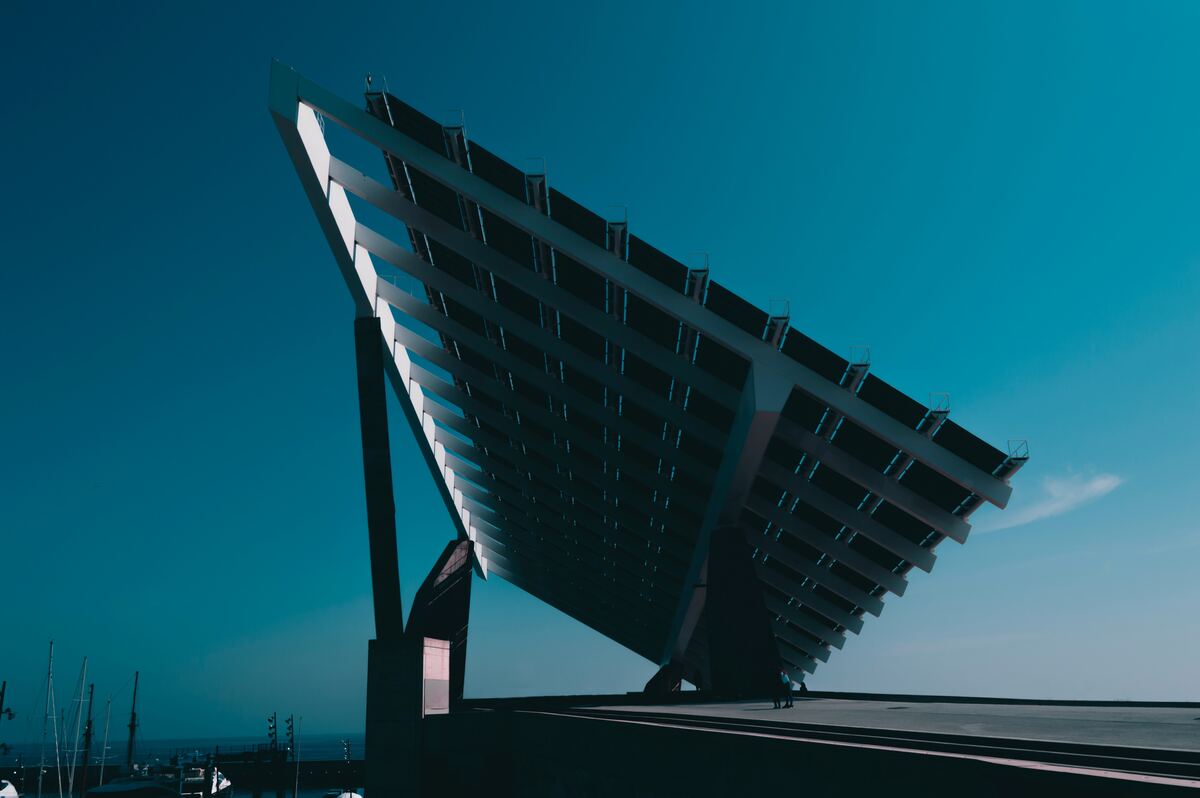
Types of Solar Panel Systems
Solar panel in building come in various types, each with distinct characteristics and advantages. These different panel types cater to diverse needs and environments. Here are the primary types of solar panels:
Monocrystalline Solar Panels
Monocrystalline solar panel in building sector, also called single-crystal panels, are crafted from a single pure silicon crystal cut into multiple wafers. These panels stand out with their dark black color due to their use of pure silicon, making them the most space-efficient and durable option among the three primary solar panel types. However, this efficiency comes at a price, as a substantial amount of silicon is wasted in the production of a single monocrystalline cell, often exceeding 50%, resulting in a higher cost.
Polycrystalline Solar Panels
Polycrystalline solar panel in building, as the name suggests, are composed of various silicon crystals rather than a single crystal. These silicon fragments are melted and cast into square molds, giving polycrystalline cells their characteristic square shape. This production method reduces waste and makes polycrystalline panels more affordable. However, their energy conversion and space efficiency are lower than that of monocrystalline panels. Additionally, they are less tolerant of high-temperature conditions, which affects their performance.
Passivated Emitter and Rear Cell (PERC) Panels
PERC solar panel in building sector represent an advancement over traditional monocrystalline cells. This newer technology incorporates a passivation layer on the rear surface of the cell, which enhances efficiency in several ways:
- It reflects light back into the cell, increasing the absorption of solar radiation.
- It reduces electron recombination, enhancing electron flow.
- It reflects higher wavelengths of light, preventing them from heating the cell’s back sheet.
PERC panels offer greater solar energy collection within a smaller physical footprint, making them suitable for constrained spaces. While they entail slightly higher production costs due to additional materials, their efficiency can result in a lower average cost per watt.
Thin-Film Solar Panels
Thin-film solar panel in building is characterized by their extremely thin and flexible layers. They do not require a frame backing, making them lighter and easier to install compared to crystalline silicon panels with standardized sizes. Thin-film panels come in various sizes to accommodate specific needs. However, they generally have lower energy conversion efficiency than traditional silicon panels.
Variations of Thin-Film Solar Panels
Thin-film panels are fabricated from various materials, including:
- Cadmium telluride (CdTe)
- Amorphous silicon (a-Si)
- Copper indium gallium selenide (CIGS)
Bifacial Solar Panels
Bifacial panels capture sunlight from both sides, increasing energy production. They can be ground-mounted or installed on reflective surfaces to maximize efficiency. Bifacial panels are advantageous in areas with high albedo (reflectivity) surfaces.
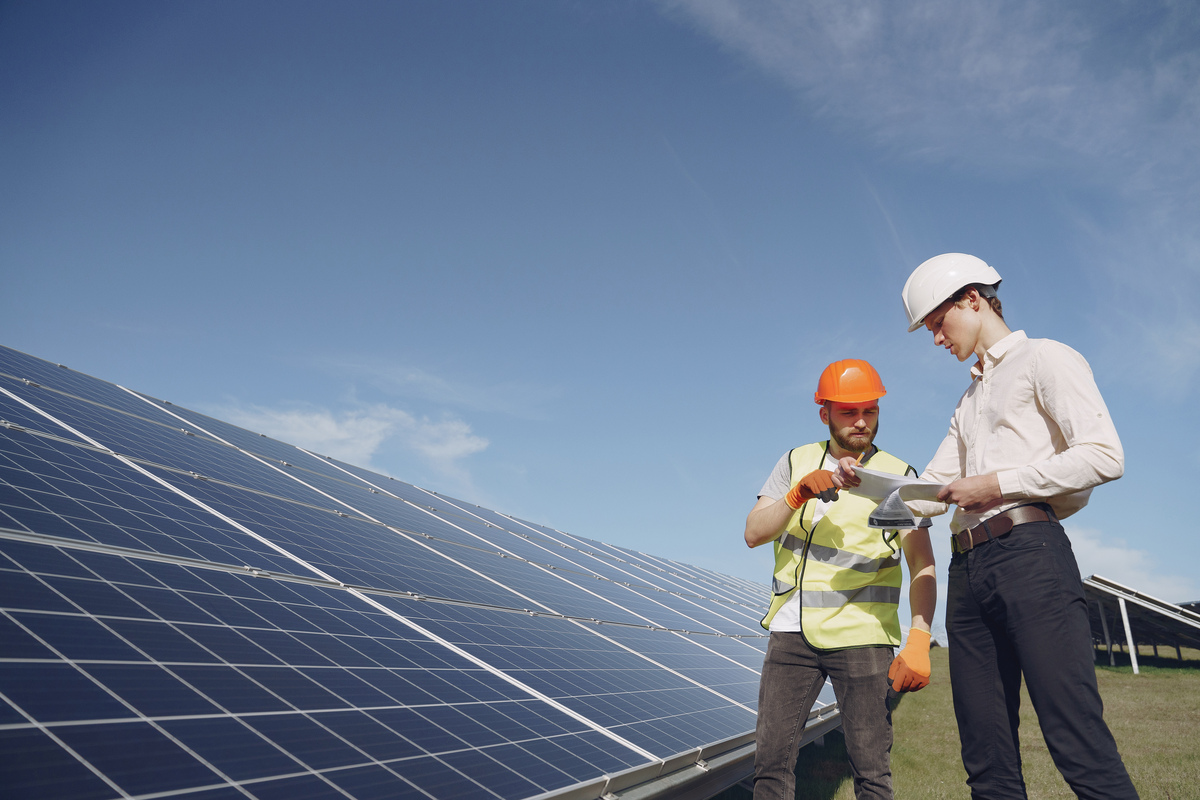
Concentrated Photovoltaic (CPV) Panels
CPV panels use lenses or mirrors to concentrate sunlight onto small, high-efficiency solar cells. They are highly efficient but require precise tracking to follow the sun’s movement. CPV panels are typically used in large-scale solar power plants.
Building-Integrated Photovoltaics (BIPV)
BIPV integrates solar panels into building materials like roofing, facades, or windows. They serve a dual purpose of generating electricity and acting as building elements. BIPV blends aesthetics and functionality and is often used in green architecture.
Hybrid Solar Panels
Hybrid panels combine different solar cell technologies, such as crystalline and thin-film, to enhance efficiency. They can capture a broader spectrum of light and operate in various conditions. Hybrid panels are suitable for areas with unpredictable weather patterns.
Tandem Solar Panels
Tandem panels stack multiple solar cell layers on top of each other, each designed to capture specific parts of the solar spectrum. This technology increases efficiency by maximizing light absorption. Tandem panels are still in the research and development phase but hold great potential for the future.
Solar Panel in building Types by Efficiency
Among the different panel types, crystalline solar panel in building exhibit the highest efficiency. Monocrystalline panels typically achieve an efficiency rating exceeding 20%, while PERC panels add an extra 5% efficiency due to their passivation layer. Polycrystalline panels fall within the range of 15-17% efficiency. In contrast, thin-film panels are usually 2-3% less efficient than crystalline silicon panels. On average:
- CIGS panels have an efficiency range of 13-15%.
- CdTe panels range between 9-11%.
- a-Si panels have the lowest efficiency at 6-8%.
Solar Panel Types by Power Capacity
Monocrystalline panels boast the highest power capacity thanks to their single-crystal construction, generating up to 300w of power capacity. Recent advances have also allowed polycrystalline panels to reach similar power outputs. However, monocrystalline panels still lead to power capacity per cell. Thin-film panels do not adhere to uniform sizes, and their power capacity varies based on their physical dimensions. Generally, conventional crystalline panels outperform thin-film panels of the same size in power generation.
Solar Panel Types by Cost
Monocrystalline panels carry a higher price tag due to their energy-intensive and less efficient manufacturing process, resulting in significant silicon wastage. Polycrystalline modules are more budget-friendly as they make use of leftover crystal fragments from monocrystalline production, simplifying the manufacturing process and lowering production costs. Among thin-film solar panels, CIGS is the most expensive, followed by CdTe and amorphous silicon. Thin-film modules can be easier to install due to their lighter weight and flexibility, reducing labor costs. While the total cost of residential systems has decreased, soft costs, which include installation and labor, have risen in proportion.
Other Considerations
Several other factors should be considered when choosing solar panel in building:
- Temperature: The temperature coefficient affects a panel’s energy generation capability. Thin-film panels exhibit a lower temperature coefficient, making them suitable for hotter climates.
- Fire Rating: Solar panel in building must match the fire rating of the roof where they are installed. Panels carry classifications such as Class A, Class B, and Class C, based on their fire resistance.
- Hail Rating: Panels are tested for hail impacts. Crystalline panels can withstand higher hail speeds than thin-film panels due to their thicker construction.
- Hurricane Rating: While there is no formal hurricane rating, recommendations for solar panel in building design specifications have been expanded to ensure resilience against severe weather conditions.
- Light-Induced Degradation (LID): LID is a performance loss observed in crystalline panels during the initial hours of sun exposure, resulting from sunlight reacting with oxygen traces left during manufacturing. LID loss varies based on manufacturing quality.
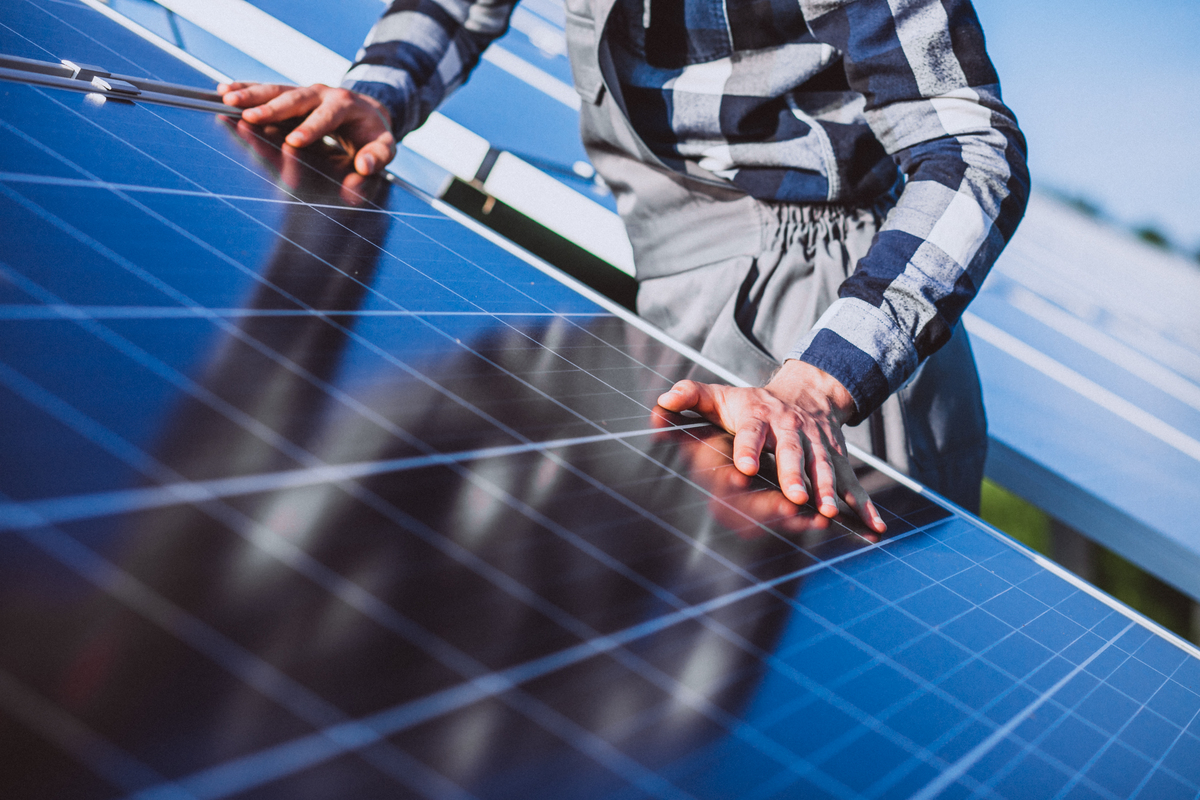
Solar Panel Installation
Installing solar panels on rooftops and other building structures involves a series of steps to ensure the efficient and safe generation of solar energy. Here is an overview of the process:
1. Site Evaluation:
- The procedure initiates a site evaluation to ascertain the suitability of the location for solar panel in building installation.
- Factors such as the building’s position, shading from nearby structures or trees, roof condition, and local climate are assessed.
- Additionally, the energy requirements of the building are analyzed to determine the appropriate system size.
2. Planning and Design:
- Using the site assessment, a solar energy system is designed to meet the building’s energy needs.
- The design encompasses the arrangement and orientation of solar panels, wiring, inverters, and mounting systems.
- Essential permits and approvals from local authorities are secured.
3. Procuring Materials:
- Following the finalization of the design, the necessary components like solar panel in building, inverters, mounting hardware, wiring, and other items are acquired.
4. Preparing the Roof:
- If the building’s roof necessitates repairs or is unsuitable, preparations are made. This may involve reinforcing the roof, conducting repairs, or replacing it.
5. Installing Mounting Structures:
- Racking or mounting structures are set up on the rooftop or other building surfaces to support the solar panel in building.
- These structures are firmly affixed to the building to ensure stability and proper panel alignment.
6. Placement of Solar Panels:
- Solar panel in building is positioned on the mounting structures according to the design layout.
- Panels are securely fastened to the mounting frames to withstand environmental conditions.
- Wiring and connectors are installed to link the panels to the inverter and electrical system.
7. Inverter Setup:
- Inverters are installed near the solar panels or within the building to convert the direct current (DC) generated by the panels into usable alternating current (AC) electricity.
- Adequate grounding and electrical connections are established.
8. Electrical Connections:
- Wiring and conduits are utilized to connect the solar energy system to the building’s electrical panel or grid connection point.
- Rigorous checks are conducted on electrical connections to ensure safety and adherence to local electrical codes.
9. Testing and Activation:
- The entire solar energy system undergoes comprehensive testing to ensure its proper operation.
- This involves verifying system performance, voltage levels, and safety mechanisms.
- Any identified issues or defects are addressed before activation.
10. Grid Connection (if applicable):
- For buildings connected to the electrical grid, the solar energy system is integrated with it.
- Arrangements for feeding surplus energy into the grid, such as net metering, are configured.
11. Monitoring and Upkeep:
- Post-installation, ongoing monitoring of the system is conducted to track energy production and performance.
- Routine maintenance tasks, including panel cleaning and connection inspections, are carried out to maintain efficiency and system longevity.
12. Safety Inspections and Final Approval:
- Building inspectors may perform safety assessments to confirm compliance with local building and electrical codes.
- Following receipt of final approval, the solar energy system can be fully operational.
13. Energy Generation and Savings:
- With solar panel in building generating electricity, the building begins to benefit from clean, renewable energy, resulting in reduced electricity expenses and a decreased environmental footprint.
Installing solar panels on rooftops and building structures not only provides access to sustainable energy but also contributes to lowering greenhouse gas emissions and reducing reliance on fossil fuels. Adequate planning and professional installation are essential for a successful and secure solar panel in building.
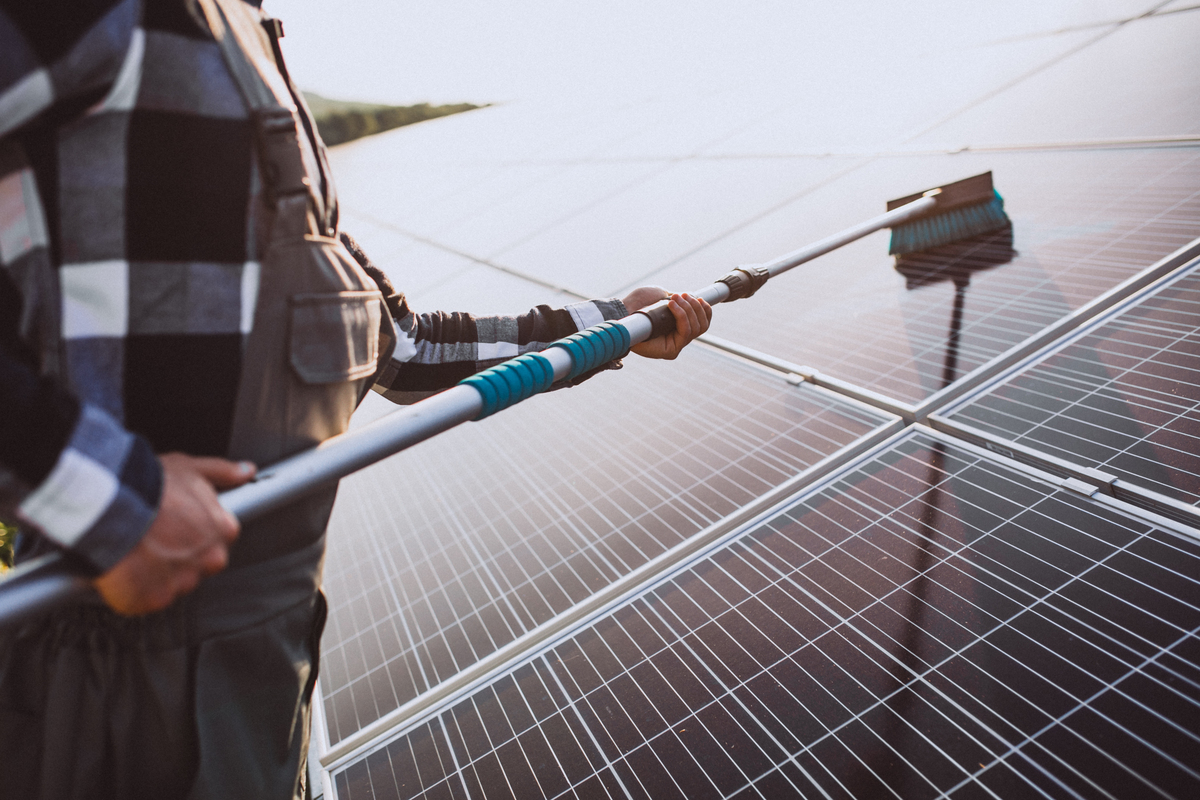
Solar Panel Maintenance and Care
Solar panel in building typically demand minimal maintenance to function effectively. In essence, they can be left to their own devices. The primary maintenance requirement is occasional light cleaning to ensure that dirt, leaves, and debris do not obstruct sunlight.
More extensive maintenance may be necessary during heavy snowfall periods when accumulated snow can hinder the panels’ performance.
Can You Monitor Your Solar Panels’ Health?
Should you notice a decrease in your panels’ energy output, you can monitor their performance via a mobile app. Reduced energy production may indicate obstructions, such as debris, preventing them from generating their usual electricity output.
By incorporating a solar panel monitoring system into your setup, you can track daily and cumulative energy production. This enables you to assess the impact of external factors on your panels’ performance and their long-term efficiency. The monitoring system can also alert you to any panel breakages or malfunctions, allowing for timely repairs or replacements.
How to Maintain Solar Panel in Building
For tilted panels, rainfall often clears accumulated debris. However, during dry seasons or extended periods without rain, manual cleaning is necessary. It is generally recommended to clean solar panel in building two to four times a year, which is relatively simple. A leaf blower or a quick spray with a garden hose can effectively clean the panels, keeping them in top condition.
In winter, it may be essential to clear panels of snow after heavy snowfall. If using water for snow removal, ensure it is lukewarm. Alternatively, a long-handled squeegee can be employed. Avoid using hot water, as the extreme temperature difference can potentially damage the panels’ tempered glass.
Ground-Mounted Panels vs. Rooftop Panels – Maintenance Difference
In terms of maintenance, the primary distinction between ground-mounted and rooftop solar systems lies in accessibility. Ground-mounted panels are easier to access and, therefore, simpler to keep clean. Accumulated snow or debris on ground panels can be easily removed with a soft-bristled broom.
Impact of Extreme Weather on Solar Panel in Building
Solar panel in building is designed for durability and can withstand various weather conditions, including wind, rain, snow, and more. They are resilient against hail and have demonstrated their ability to survive hurricanes with minimal damage. However, while they are durable, they are not entirely impervious to damage caused by hail, hurricanes, tornadoes, or lightning. Having a reliable warranty can cover the repair or replacement of damaged panels.
Interestingly, the weather condition that most commonly affects panels is heat. Panels may lose efficiency in temperatures exceeding 77°F (25°C), decreasing efficiency by approximately 1% per degree. Elevating panels slightly above the ground or roof allows for air circulation, aiding in cooling and maintaining energy production.
How to Repair or Replace Solar Panel in Building
In cases requiring repair or replacement of solar panels, it is advisable to enlist the services of a professional. If panels experience reduced efficiency and fall under a performance or power output warranty, contacting the installing company is the best course of action. They will assess the situation and either rectify the issue or replace the panels.
Physical damage to panels is often covered by a separate equipment warranty. Collaboration with the solar installer can help identify the best approach for replacing damaged panels. It is crucial not to attempt DIY panel installation or repairs unless experienced with home solar systems.
Standard Warranty for Solar Panels
Ensuring that the solar panel in building come with a robust warranty is essential, as declining efficiency could result in significant financial losses over the years. Solar panel warranties typically range from 15 to 25 years, guaranteeing that energy production remains at 80% or higher throughout the specified period.
Are Solar Panels Difficult to Maintain?
In summary, maintaining solar panel in building is relatively straightforward. Regular cleaning to remove dust, debris, or snow ensures that panels operate efficiently. It is also crucial to select panels with a comprehensive warranty to facilitate replacement if necessary. With these measures in place, solar panel in building can continue to deliver clean, renewable energy for years to come.
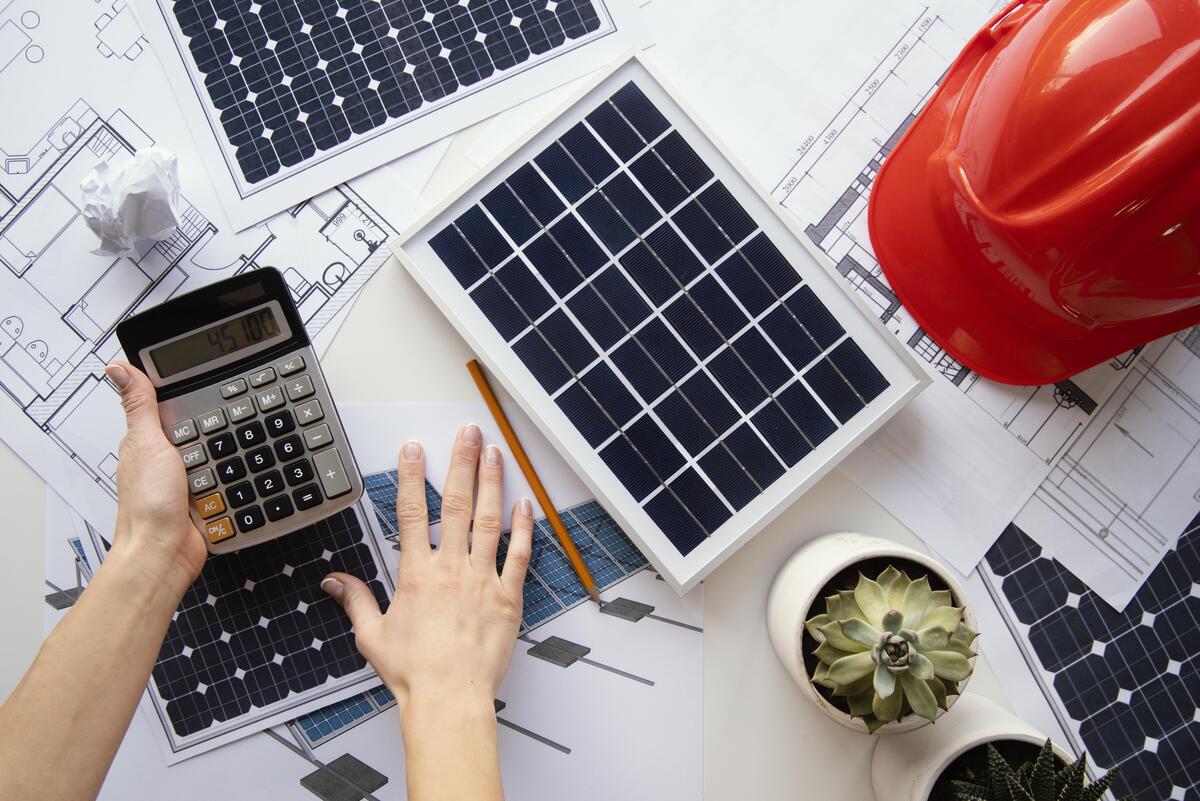
Financing and Incentives for Solar Panel in building
As technology has improved and costs have decreased, solar energy has emerged as a more appealing choice for households and businesses. According to a Lawrence Berkeley National Laboratory (LBNL) report, utility-scale solar project costs decreased by 70% between 2010 and 2020.
Profiting from Solar Panel Installation
Many state governments provide various forms of tax incentives and grants to promote the wider adoption of solar panel in building. Consequently, the ultimate cost after installation may be lower than the initial price tag. Additionally, tax credits related to solar power can lead to reductions in annual tax obligations. However, the most advantageous way to gain financial benefits from the installation of solar panel in building on your roof is through a practice known as net metering.
Net metering enables utility customers who generate their own solar electricity to supply excess energy back to the grid. This billing mechanism credits solar users for the surplus electricity they contribute, thereby reducing their monthly utility bills. Although most states have enacted net metering laws, variations in state legislation and implementation mean that the advantages of net metering can differ for solar customers across the country.
The savings derived from solar panel in building accumulate significantly. As reported by EnergySage, homeowners in Washington can save between $17,173 and $23,234 over a 20-year period if they adopt solar power, based on 2019 costs for a 5 kW system. In California, homeowners stand to save between $44,728 and $60,515, while in New York, the potential savings range from $17,504 to $23,683 over two decades, using 2019 costs for a 5 kW system. Some estimates even project these savings to be considerably higher.
Famous Buildings with Solar Panels
Solar panel in building have ushered in a new era of sustainable architecture, making their mark on some of the world’s most iconic buildings. These structures are not only celebrated for their architectural brilliance but also for their commitment to green energy. Solar panel in building have seamlessly blended into their designs, representing a resolute shift towards cleaner and more eco-friendly power sources. Join us on a journey to discover some of the globe’s most renowned buildings that have wholeheartedly embraced solar energy, paving the way for a greener future.
1. The Vatican: The Vatican City, the world’s tiniest independent state, is also a pioneer in green initiatives. In 2008, they installed 2,400 solar panels on top of the Paul VI Audience Hall, generating electricity to power the hall and nearby areas, showcasing their commitment to clean energy.
2. The White House: The official residence of the U.S. President, the White House, embraced solar energy in 1979 when President Jimmy Carter placed 32 solar panels on its roof. Although these panels were removed in 1986 for roof repairs and replaced only in 2010 during President Barack Obama’s term, their reinstallation aimed to promote clean energy adoption symbolically.
3. The Apple Park: Apple’s cutting-edge headquarters, known as Apple Park or the “Spaceship Campus,” boasts one of the world’s largest corporate solar installations. The circular structure is adorned with numerous solar panels on its roof, powering the facility with renewable energy, reflecting Apple’s strong commitment to sustainability.
4. The Adelaide Airport: Australia’s Adelaide Airport is known for its dedication to renewable energy. It houses one of the Southern Hemisphere’s largest commercial rooftop solar setups, comprising over 8,000 solar panels covering the terminal roofs. This installation generates a significant portion of the airport’s electricity, reducing its environmental impact.
5. The Sistine Chapel: Another testament to Vatican City’s green endeavors is the installation of 2,400 photovoltaic panels in Pope Paul VI Hall in 2008. These solar panels contribute to the energy needs of the iconic Sistine Chapel, powering its lighting, heating, and cooling systems, and enhancing its energy efficiency.
6. The California Academy of Sciences: San Francisco’s California Academy of Sciences, a renowned institution for scientific research and public education, features a distinctive “living roof” covered with more than 50,000 photovoltaic cells. These solar panels not only generate electricity for the facility but also provide insulation and reduce stormwater runoff.
7. The Burj Khalifa: The Burj Khalifa, the world’s tallest skyscraper in Dubai, incorporates a solar array on its roof. With 378 solar panels, the building harnesses solar energy to meet part of its power requirements, exemplifying the potential for renewable energy in towering structures.
8. The National Stadium in Taiwan: Taiwan’s National Stadium, often called the “Bird’s Nest,” is an architectural marvel. Its roof is adorned with over 8,800 solar panels, supplying electricity for stadium lighting and contributing surplus energy to the grid. This dual-purpose approach underscores solar power’s viability in sports venues.
9. The Cochin International Airport: India’s Kerala state proudly holds the title of the world’s first fully solar-powered airport. Spanning 45 acres with over 46,000 solar panels, it generates surplus electricity, setting a remarkable example for sustainable aviation.
10. The Bullitt Center: Seattle’s Bullitt Center is among the most environmentally friendly commercial buildings globally. Its rooftop houses a solar panel array, aiding the building in achieving net-zero energy consumption. The Bullitt Center establishes a high standard for eco-conscious office spaces.
These renowned structures, equipped with solar panel in building, serve as inspirational illustrations of how renewable energy sources can be seamlessly integrated into various architectural designs, highlighting the growing significance of solar power on a global scale.
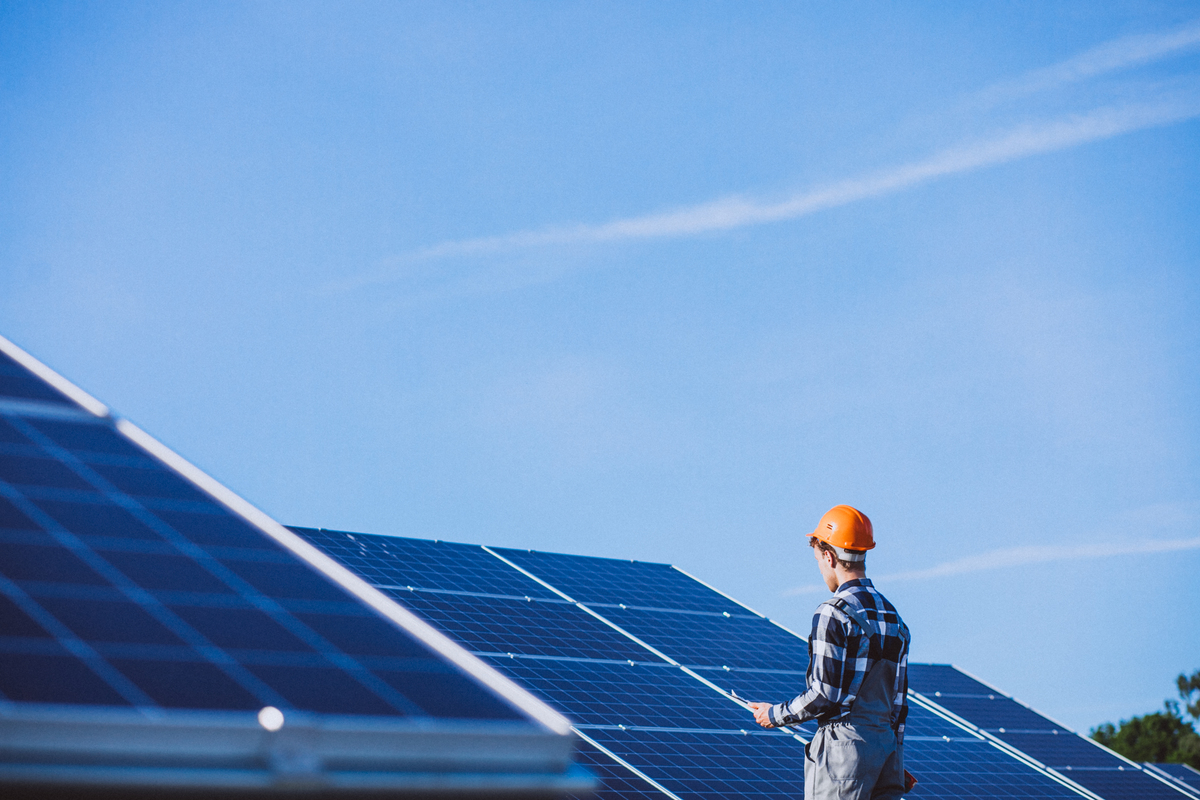
Future Trends and Technologies for Solar Panel in Building
Scientists are testing different materials like metal oxides for solar cells and new materials for energy devices to make them more practical. The future of solar technology involves constructing energy-efficient buildings that generate their energy, resulting in cost-effective, renewable-powered structures. Recycling solar panel in building has been a challenge due to their high recycling costs compared to sending them to landfills.
There are four aspects of energy efficiency in building construction where technology plays a pivotal role:
- Zero-energy passive building design before construction begins.
- The use of low-energy building materials during construction.
- Utilizing energy-efficient equipment to reduce operational energy requirements.
- Integration of renewable energy technologies for various applications.
By 2050, it’s estimated that the world may have 78 million tons of solar waste, with the U.S. contributing 10 million metric tons. Solar panel designs are becoming more attractive and space-saving, but specialized labor is needed for their removal, potentially creating more jobs. The solar industry has already generated substantial private investment and job opportunities in the U.S. Solar energy is gaining popularity as a reliable and sustainable power source, with advancements in technology making it more efficient.
JSolarE is a leading company transforming the solar energy industry with innovative solutions. Researchers are working on improving solar energy storage using organic-based solar cells instead of silicon-based ones to address these challenges.
Flexible Solar Cells: Flexible solar cells, which are thin and lightweight, offer easy installation and can be applied to various surfaces like roofs, windows, and walls. Researchers continuously enhance their flexibility and efficiency. The Journal of Solar Energy covers research on flexible solar cells, including organic solar cell technologies and advanced materials.
Hybrid Solar Cells: Hybrid solar cells combine organic and inorganic cell benefits, converting a wide light wavelength range into electricity for increased efficiency. The Journal of Solar Energy has published articles on their structure, construction materials, and optimization for maximum power production.
Concentrated Solar Power: Concentrated solar power technology concentrates sunlight on a small area using mirrors or lenses, generating heat that produces electricity and offers high efficiency and energy storage capabilities. The Journal of Solar Energy features research on concentrated solar power, including materials and component innovations to enhance efficiency and reduce costs.
Integration of AI Systems: Artificial Intelligence (AI) is revolutionizing various aspects of life, including the solar energy industry. AI improves the efficiency of solar panel systems, maximizes energy output, and reduces operational costs.
JSolarE leads in incorporating AI into its solar energy solutions. Their systems include predictive maintenance features, allowing users to detect and anticipate solar panelin building failures. This feature minimizes repair and maintenance expenses and extends the system’s lifespan.
JSolarE’s predictive maintenance system uses machine learning algorithms that analyze real-time data from inverters and sensors. This enables the system to identify potential malfunctions, allowing users to schedule maintenance before significant failures occur, resulting in minimal downtime and operational costs.
Suggested article for reading: Zero Energy Buildings
What are the Environmental Impacts of Solar Panel in Building?
Solar energy is a renewable resource that plays a significant part in lowering greenhouse gas emissions and preventing climate change, which is essential for safeguarding people, animals, and ecosystems. Additionally, the usage of solar energy can minimize water consumption and enhance air quality. Sites must be chosen, planned, and managed to minimize impacts on nearby wildlife, animal habitats, soil resources, and water supplies since ground-mounted photovoltaics (PV) and concentrating solar-thermal power plants need the use of land.
The Solar Energy Technologies Office (SETO) of the U.S. Department of Energy (DOE) funds studies to better understand the interactions between solar energy installations, wildlife, and ecosystems and to develop plans that will improve the local environment as much as possible.
Solar panel in building, as a form of renewable energy technology, bring about various environmental advantages but are not devoid of ecological repercussions. In this discussion, we will explore both the favorable and adverse environmental aspects of solar panel in building.
Positive Environmental Impact:
- Mitigation of Greenhouse Gas Emissions: One of the foremost benefits of solar panel in building lies in their capacity to curtail greenhouse gas emissions. Solar energy stands out as a clean and sustainable energy source, producing electricity devoid of carbon dioxide (CO2) or other detrimental pollutants. By replacing electricity generated from fossil fuels, solar panel in building aid in alleviating the consequences of climate change.
- Reduction in Air and Water Pollution: Traditional methods of power generation, such as coal and natural gas, introduce pollutants into the atmosphere and aquatic environments. Solar panel in building, being emission-free during operation, foster cleaner air and better water quality. This proves especially crucial in urban locales grappling with air pollution as a significant health hazard.
- Preservation of Natural Resources: Solar panel in building demands comparatively fewer natural resources during their manufacturing compared to power plants reliant on fossil fuels. They do not deplete finite resources like coal, oil, or natural gas, contributing to the safeguarding of these resources for future generations.
- Mitigated Land Degradation: Solar panel in building is frequently installed on pre-existing structures like rooftops or on relatively small tracts of land, limiting their impact on natural habitats and ecosystems. In contrast to certain other energy generation methods, they do not necessitate extensive land use or substantial habitat disturbance.
Negative Environmental Impact:
- Energy-Intensive Production: The manufacture of solar panel in building, particularly those incorporating high-efficiency technologies, can be energy-intensive. The extraction and processing of raw materials, such as silicon, involve energy expenditure and can result in emissions.
- Resource Utilization: While solar panel in building consume fewer resources during operation, the production process involves the utilization of metals, glass, and rare materials like tellurium and indium. Sustainable sourcing and recycling endeavors can alleviate the resource utilization impact.
- Disposal at End-of-Life: Solar panel in building possess a finite lifespan, typically around 25-30 years. The disposal of aged or faulty panels can pose challenges and potential environmental issues if not managed properly. Initiatives for recycling are being devised to tackle this predicament.
- Land Use Conflicts: Sizeable solar farms can sometimes clash with land designated for agriculture or natural habitats. Prudent site selection and meticulous planning are imperative to minimize these clashes.
- Emissions Tied to Production: The energy expended in manufacturing and transporting solar panel in building can generate emissions, particularly when fossil fuels serve as the primary energy sources. The carbon footprint of solar panels hinges on their manufacturing location and energy sources.
Solar panel in building confer substantial environmental benefits by curbing greenhouse gas emissions, diminishing air and water pollution, preserving resources, and limiting land degradation. Nonetheless, their production, resource utilization, disposal at end-of-life, and land use considerations can engender detrimental environmental effects. To maximize the constructive impacts of solar panel in building, persistent endeavors toward sustainable manufacturing, recycling, and judicious land utilization are imperative. All in all, solar panels remain an indispensable tool in the transition toward a more sustainable and eco-friendly energy paradigm.
Suggested article for reading: Building Technology

Challenges and Considerations of Solar Panel in Building
Solar panel in building present both advantages and considerations that need careful attention. Understanding these aspects is vital for the successful utilization of solar energy. Below are key points outlining the challenges and factors to ponder when dealing with solar panel in building:
- Intermittent Energy Generation: Solar panel in building depends on sunlight, which is inconsistent due to factors like weather and time of day. This variability can affect energy production reliability. To address this, efficient energy storage solutions like batteries can store excess energy during sunny periods for later use when sunlight is limited.
- Energy Storage: Overcoming solar energy’s intermittent nature requires advanced energy storage solutions. Developing cost-effective and efficient energy storage systems remains a challenge, particularly in regions with unreliable power grids.
- Initial High Costs: Solar panel installation can involve significant upfront expenses, potentially deterring potential adopters. Incentives, tax breaks, and financing options exist to alleviate this financial burden.
- Efficiency Limitations: Solar panels’ ability to convert sunlight into electricity varies based on technology and type, with efficiency typically ranging from 15% to 22%. Ongoing research strives to enhance efficiency for better energy production.
- Environmental Impact: Solar panel production relies on materials like silicon, cadmium, and rare metals, which can have environmental consequences during extraction and processing. Implementing recycling programs and sustainable material sourcing is essential to reduce these environmental impacts.
- Aesthetic Concerns: The appearance of solar panels on rooftops or in natural landscapes can be a concern for some individuals and communities. Balancing aesthetics with the benefits of solar installations is important, leading to innovations such as integrated solar panels and discreet solar farm placements.
- Land Usage: Large-scale solar farms can require substantial land, potentially leading to conflicts with agriculture or natural ecosystems. Thoughtful site selection and land-use planning are necessary to minimize these issues and maintain ecological balance.
- Technological Advancements: Rapid changes in solar panel technology can make it challenging for consumers to determine the optimal time to invest. Delaying adoption of the latest advancements can hinder progress, while early adoption may result in outdated technology.
- Policy and Regulations: The solar industry is subject to various regulations and policies that can shape its growth. Inconsistent policies and a lack of supportive incentives can impede solar project development, emphasizing the need for stable and clear policies.
- Grid Integration: Integrating increasing amounts of solar power into existing grids necessitates infrastructure upgrades. Ensuring grid stability and adaptability to variable solar inputs is vital for maintaining a dependable energy supply.
While solar panel in building offer significant environmental and economic advantages, addressing challenges such as intermittency, energy storage, costs, efficiency, and environmental impact is crucial for the widespread adoption of solar energy. Ongoing research, technological advancements, supportive policies, and responsible deployment practices are key to overcoming these challenges and advancing the sustainability of solar energy.
Conclusion: The Future of Solar Panel in Building
Solar panel in building mark a significant stride in our quest for cleaner and more sustainable energy sources. They undeniably bring about environmental advantages by curbing greenhouse gas emissions, reducing reliance on fossil fuels, and aiding in the battle against climate change. Not only do solar panels offer environmental benefits, but they also present economic perks, including lowered energy expenses, job opportunities, and the prospect of energy self-sufficiency.
Nevertheless, the extensive adoption of solar panel in building does come with its set of challenges. Solar energy’s intermittent nature, the imperative need for efficient energy storage solutions, and the initial high setup costs can act as impediments for many potential users. Additionally, the environmental footprint stemming from the production and disposal of solar panels warrants prudent assessment and measures for mitigation.
Resolving these challenges necessitates a continuous commitment to research and innovation. The pursuit of more efficient solar panel technologies, the enhancement of energy storage alternatives, and the implementation of responsible practices in manufacturing and recycling are pivotal steps toward ensuring a sustainable future underpinned by solar energy. Furthermore, supportive policies, incentives, and regulatory frameworks, both at the national and global levels, hold the key to incentivizing investments in solar infrastructure.
The potential of solar energy is immense, and its future is highly promising. As technological advances make solar panel in building more efficient and cost-competitive, their adoption is poised to accelerate. Innovative solutions like integrated solar panels, building-integrated photovoltaics (BIPV), and community solar projects are set to play pivotal roles in expanding solar energy’s reach.
Moreover, the fusion of artificial intelligence (AI) with solar energy systems, exemplified by companies like JSolarE, offers the prospect of optimizing energy generation, reducing maintenance expenses, and prolonging the lifespan of solar installations. This synergy between AI and solar technology represents an intriguing avenue for further research and development.
The journey towards a sustainable and clean energy future hinges on the continuous growth and enhancement of solar panels. Through an enduring commitment to technological progress, responsible practices, and supportive policies, we can fully unlock the potential of solar energy to meet our energy requirements while preserving our planet for future generations. The path to a world powered by solar energy brims with opportunities, and our collective endeavors will mold the energy landscape of tomorrow.
Suggested articles for reading:
important construction technology in 2024
Artificial Intelligence or AI in Construction Industry; Guide to 2024
Resources:
dexma | Business Norway | National Grid Group | Build Review | aurora solar | Solar Reviews | Alter Energy Magazine | Energy 5 | Energy Information Administration | Green Match | Solar Square | Loom Solar | Green Tumble | adtSolar | Dezeen | Archello
For all the pictures: Freepik | Unsplash

